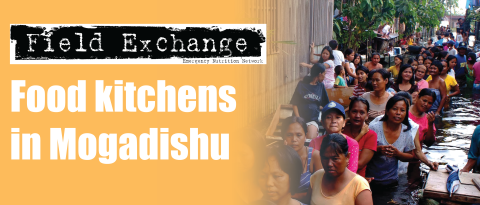en-net highlights : LNS and implementing CMAM

Between August and October 2009, 19 questions were posted on en-net, eliciting 38 replies. A variety of issues have come up including the challenge of developing age-adjusted mid upper arm circumference (MUAC) indicators for children over 5 years, how and whether to prioritise and balance numbers of children versus pregnant and lactating women in supplementary feeding programmes (SFPs), and definitions of adult malnutrition and the impact of treatment programmes.
The use of Lipid-Based Nutrient Supplements (LNS)1, specifically Ready to Use Supplementary Foods (RUSFs), for prevention of chronic malnutrition in SFPs was the theme of several questions. The debate hinged on the feasibility and appropriateness of long-term use of products. Discussants believed the longest periods of use to date have been 5-8 months; a large-scale UNICEF programme in Somalia is currently distributing one type of RUSF, Plumpy'doz, to children over a period of 8 months as a supplementary food to prevent malnutrition.
Ready to Use Therapeutic Food (RUTF) was tested recently in a cluster randomised controlled trial by MSF in Maradi, Niger2 and a preventative effect on severe acute malnutrition (SAM) was found. However while the use of RUTF in the treatment of SAM is governed by clear guidance and consensus3, this extension into the area of prevention is a new development and is not. A limiting factor in the use of these supplements for prevention is the cost of such programmes: RUTF/RUSF are expensive and there is a need to develop cheaper products and ultimately local food-based responses and livelihood approaches to the prevention of malnutrition. A real challenge in this debate is dovetailing interventions for treatment with optimal infant and young child feeding, and developing a spectrum of feeding options and criteria for use of supplements that minimise the 'medicalisation' of child feeding.
ACF-USA has recently started a pilot project in both Uganda and South Sudan on the use of Plumpy'doz for the treatment of moderately malnourished children, in addition to food security support for the households of moderate cases. A report is expected in the beginning of 2010 and will be posted on en-net.
Issues around community based management of acute malnutrition (CMAM) have also predominated on en-net recently, including the challenges of setting up programmes and calculating expected numbers, integrating Infant and Young Child Feeding (IYCF) training, and the question of to what extent Sphere standard indicators remain relevant in non-emergency situations.
The ENN/IFE Core Group and collaborators has been working to develop training material on IYCF for integration into CMAM and the content has been piloted in two countries: Sierra Leone in Feb 2009 (with Valid International and UNICEF) and Zimbabwe in June 2009 (with SCUK and UNICEF)4. The evaluations have found that the key link to integrating the IYCF content into the CMAM training, is what needs to happen at key 'Points of Contact' with mothers/caregivers and their children. Whether IYCF training precedes or follows a CMAM training is less significant than emphasis on this 'Point of Contact' link, by facilitators. Following their training, some participants described IYCF as the key link between CMAM and growth monitoring and a valuable tool towards integrated programming. Others felt it was the fifth element of CMAM programming, that it sat well with prevention and treatment of malnutrition and that it really helped them to appreciate the community engagement of the community-based approach.
Visit www.en-net.org.uk for more on these discussions or to post your own questions.
Contributors online: David Doledec, Mark Manary, Basil Kransdorff, Michael Golden, Marie McGrath, Maria M Lletjos, Ali Maclaine
1LNS are a family of ready-to-use food products with high energy and nutrient content. Lipids are the main source of energy. The term encompasses a wide range of products. See Strengthening action to improve feeding of infants and young children 6-23 months of age in nutrition and child health programmes. Geneva, 6-9 October 2008. WHO/UNICEF. Report of Proceedings
2Effect of Preventive Supplementation with Ready-to-Use Therapeutic Food on the Nutritional Status, Mortality and Morbidity of Children Aged 6 to 60 Months in Niger: A Cluster Randomized Trial, Sheila Isanaka, Nohelly Nombela, Ali Djibo et al, JAMA. 2009;301(3):277-285.
3WHO/WFP/UNSCN/UNICEF Community based management of severe acute malnutrition. Joint statement. Food and Nutrition Bulletin, September 2006
4ENN (2009). Integration of IYCF support into CMAM. Facilitators Guide and handouts. ENN, IFE Core Group & collaborators. October 2009. See news piece in this issue. Available at www.ennonline.net/resources
Imported from FEX website


